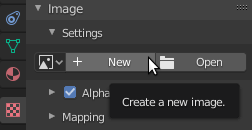After applying to a small studio and making a model of an axe with two pieces which meant separate UV maps. After submitting the model and textures, I was told that both the blade and handle of the Axe should be in one texture. I don't really know how to do this in Blender, so any help would be appreciated.
-
1$\begingroup$ Welcome to the site. Your question may be on the verge of being off topic for Blender.Stackexchange, becaues combining two images into one, even if in support of a blender model, is image processing, and this particular bit of image processing is not within the scope of Blender.stackexchange.. $\endgroup$– brasshatCommented Jun 19, 2015 at 2:12
-
6$\begingroup$ @yhoyo You linked back to this post $\endgroup$– GiantCowFilmsCommented Jun 19, 2015 at 2:27
-
7$\begingroup$ @brasshat I don't see how this is off topic, it's fairly simple baking. I'm writing up an answer right now. $\endgroup$– TARDIS MakerCommented Jun 19, 2015 at 2:32
-
1$\begingroup$ @brasshat baking textures is blenders functionality, how is it off topic? Would be faster and easier to do that in blender than to switch to other software. $\endgroup$– DenisCommented Jun 19, 2015 at 2:47
-
2$\begingroup$ Okay, I disagree, but I'm done discussing it. $\endgroup$– TARDIS MakerCommented Jun 19, 2015 at 3:54
2 Answers
This can be done easily with some baking in Blender.
First, join your two object together with CTRL J.
Create UV map for your bake that include both objects.
Then create a new image for your texture bake, create a new material for it, and make sure it's selected.
Then go to the textures tab, create a new texture, and create (or link in) an image; for example, to create a new 4096² texture image for the output:



Then go to the Render tab of the Properties editor, and ensure that the Render Engine is set to Cycles (othwerise the Bake panel below will not be available):

In the Bake panel, set the Bake Mode to Textures, and press Bake.

You should get something like this. (of course it will be your textures instead of mine)

Then just save out the image, remove the other material slots and the first UV map, and you should be good!
-
3$\begingroup$ And you can bake multiple materials with different UV maps into one texture also. $\endgroup$– DenisCommented Jun 19, 2015 at 3:44
-
$\begingroup$ Ah, that's neat. I didn't think of that. Does it require any special steps, or does it work in basically the way I outlined it? $\endgroup$ Commented Jun 19, 2015 at 4:05
-
1$\begingroup$ Works the same, just define the UVs and textures in the material and bake on the main UV map $\endgroup$– DenisCommented Jun 19, 2015 at 4:23
Take your two textures, and combine them side by side in your image editor (such as photoshop).
It will make reassigning the UVs easier if the two images are the same size, and the new image is simply double the width (or height).
In blender change the texture image on both the handle and the axe.
You can do that by opening the properties region N in the Image Editor and changing the source of the image.

You will have to adjust the position of the UVs (because you changed the size and shape of the image texture.) If your new image is double the width of the old imge, select all the UVs and scale along the X axis by .5. (SX .5)
Last join your two objects together CtrlJ. (If you join them before changing the UVs and texture you will be creating more work for yourself.)
-
$\begingroup$ Is there no way to automate this solution? I'm headed down this path because blender's automatic re-packing is resulting in a huge drop in texture quality. It's like it takes the bits of my textures where the resolution was the most important, and scales those down, while storing other things multiple times which were only stored in the original texture files once. But I also have a lot of texture files and don't particularly fancy spending a whole week per file. $\endgroup$– HakanaiCommented Jan 10, 2018 at 14:50
-
$\begingroup$ (Also, what mode do I have to be in for S to do what you're saying it does? As usual with Blender stuff, it is doing something completely different.) $\endgroup$– HakanaiCommented Jan 10, 2018 at 14:52

